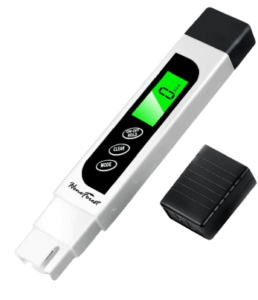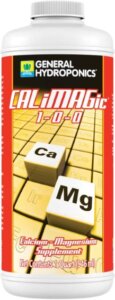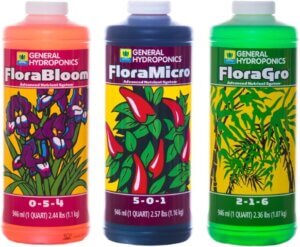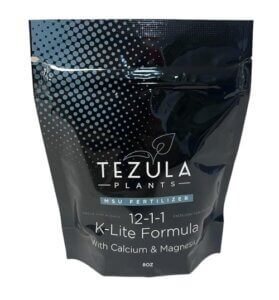Ready to make your semi-hydroponic plants thrive? This guide dives right into the essentials—from the best water types to nutrient mixes, fertilizers, and pH management.
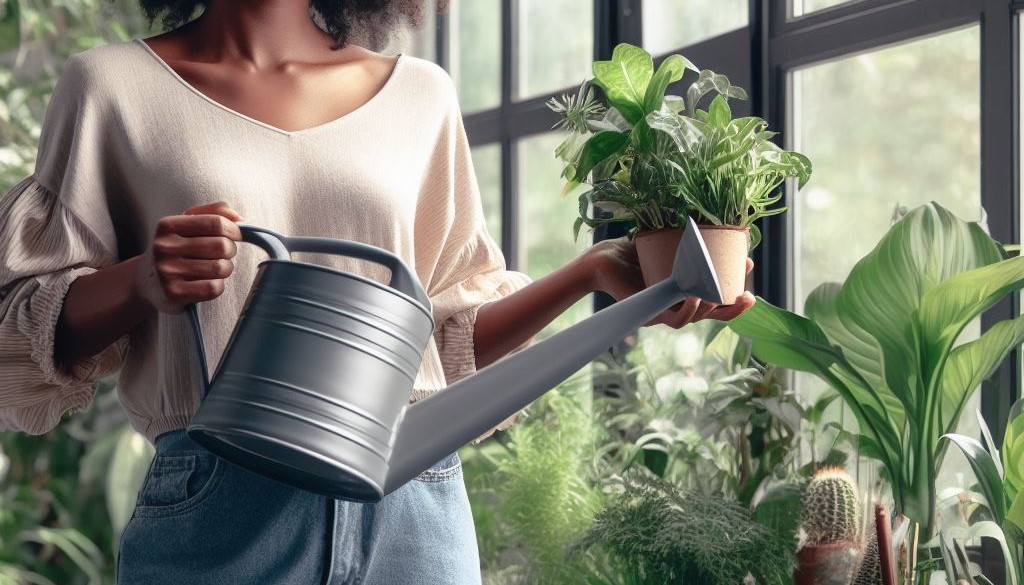
LECA (Light Expanded Clay Aggregate) and Pon are mineral-based medium that doesn’t naturally contain the nutrients plants need to grow. On the other hand, soil is packed with all the essential elements that make plants happy.
Help your plants flourish by giving them the right nutrients in a form they can easily absorb!
So, when you switch your plant from soil to LECA/Pon, you’ll need to add those missing nutrients back in.
And don’t worry, it’s not as intimidating as it sounds!
Summary
Nutrient Solutions for LECA/Pon
- Semi-hydroponic setups require special nutrient solutions; soil nutrients won’t suffice.
- Use 0 PPM water (reverse osmosis or distilled) to avoid extra elements like fluoride and chlorine.
- PPM (Parts Per Million) and TDS (Total Dissolved Solids) meters help measure nutrient concentration.
- Calcium and magnesium are crucial minerals that need to be added to your nutrient mix.
- Detailed recipes provided for making nutrient mixes for houseplants, orchids, and hoyas.
- pH levels are important for nutrient absorption but may not require constant adjustment.
- Popular products like Superthrive and Liquid Dirt are discussed, with recommendations for safer alternatives.
Fertilizers & Products in this Article
| Product | Purpose | |
|---|---|---|
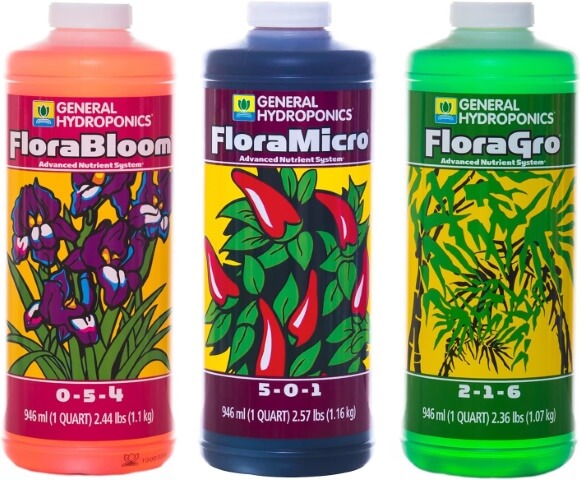 | General Hydroponics FloraSeries | Solid nutrient solution for all houseplants. |
| RapidStart | Promotes root growth and reduces transplant shock | |
| CalMag | Provides essential calcium and magnesium for plant growth | |
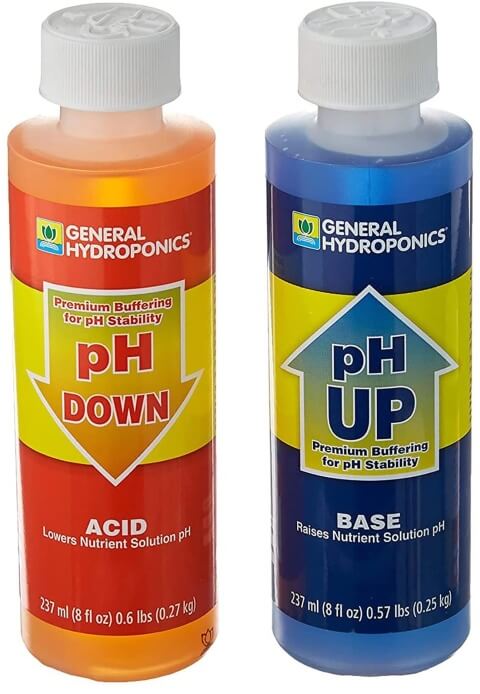 | pH Up / Down | Used to raise or lower the pH of nutrient solutions |
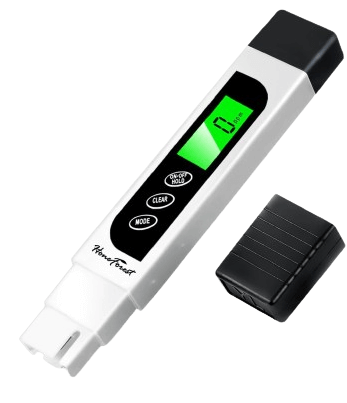 | TDS Meter | Used to check nutrient water PPM. |
| Sturdy Stalk | Enhances plant structure and strength | |
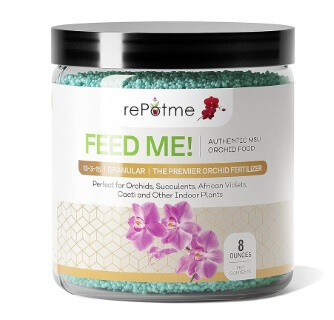 | MSU Orchid Fertilizer | Contains essential macronutrients for plant growth |
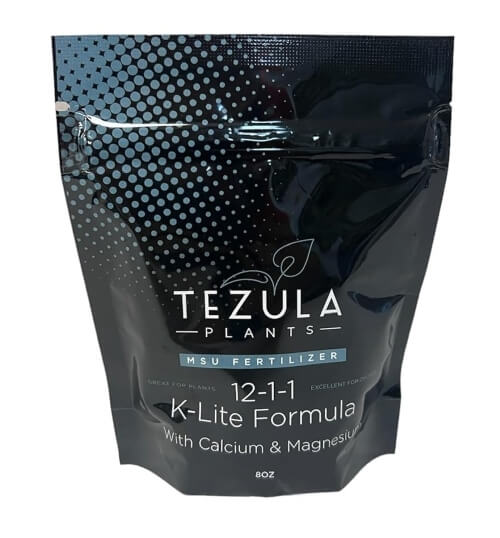 | K-Lite | Combined fertilizer and CalMag product for orchids and hoyas |
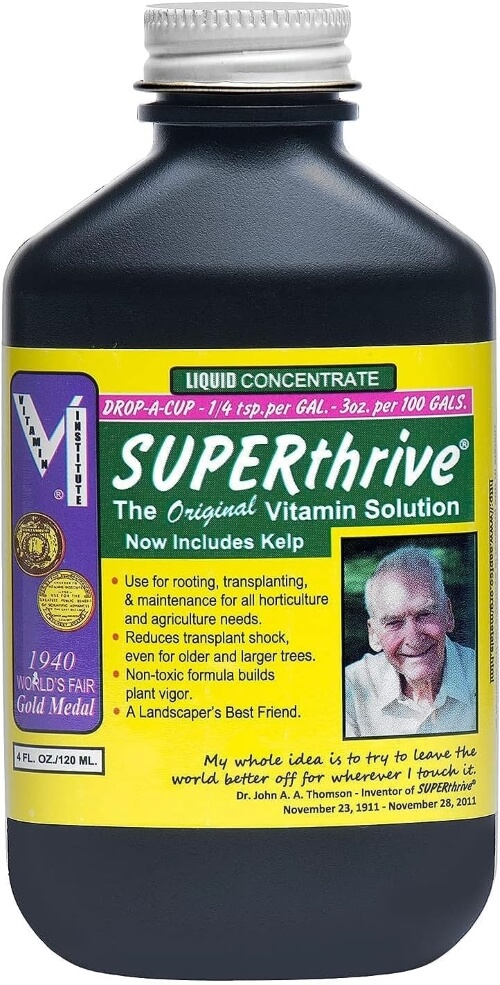 | Superthrive | Boosts root growth, not recommended for heavy use |
| Quantum Orchid | Contains beneficial bacteria for a healthy root zone | |
| Orca | Contains beneficial bacteria for a healthy root zone | |
 | Mr. Fulvic | Enhances nutrient absorption in plants |
Notes:
- Products in bold are recommended.
- If you use the products in bold, when mixing them in the same bottle, follow this specific order for the best effect: Water → CalMg → General Hydroponics FloraSeries → RapidStart → pH Up/Down
Semi-Hydroponics Nutrient For Newbies
If you’re new to this and find the details below a bit too much, no worries!
Simply grab a gallon jug, fill it with tap water, and add your usual fertilizer—just cut the recommended dose to a quarter or half. Voila, you’ve got your nutrient solution!
However, keep in mind that using tap water for the long haul isn’t the best idea. Consider investing in a reverse osmosis system or start using filtered water.
What is PPM?
PPM stands for Parts Per Million. It’s a measure of the concentration of substances in water. To check the PPM, you’ll need a TDS (Total Dissolved Solids) Meter.
Before diving into the nitty-gritty of nutrient solutions, let’s get familiar with PPM,
For instance, if you start with distilled water, your TDS meter will read 0 PPM. Add a spoonful of fertilizer, dissolve it, and you might see the meter jump to 200 PPM. The more you add, the higher the PPM.
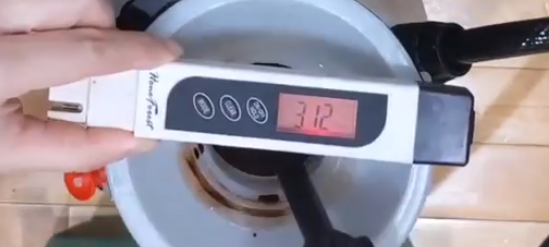
Remember, a TDS meter won’t tell you what’s in the water, just how concentrated it is.
TDS Meter
- Accurate & Reliable: Premium titanium alloy probe and intelligent chip for precise water quality testing.
- Multifunctional & Upgraded: Combines TDS, EC, and Temperature measurement with user-friendly features.
- Easy & Instant: Quick and automatic readings with a 2-minute auto-shutoff.
- Multipurpose TDS Tester: Suitable for various applications, from drinking water to pools.
- 3-Year Warranty: Includes a 90-day Money Back Guarantee.
Note that PPM readings can vary depending on where you are in the world. In the U.S., PPM is converted from EC (Electrical Conductivity), and the conversion formula may differ in other countries. To standardize your readings, switch your TDS meter to EC mode.
You’ll find that organic fertilizers don’t really show up on a TDS meter. That’s because TDS meters are designed to measure salt-based, inorganic fertilizers by assessing the water’s electrical conductivity.
What’s the Best Water Type for Your Semi-Hydroponic Plants?
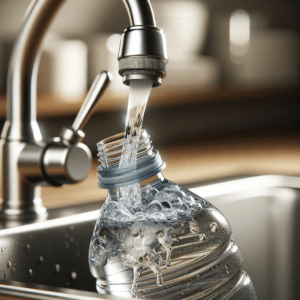
When it comes to semi-hydroponics, the type of water you use can make a big difference. Here’s a rundown of your options and why they matter.
Tap Water
Straight from your faucet, tap water usually contains a mix of minerals like calcium and magnesium, along with additives like fluoride. Depending on your location, tap water can range from 30 to 300 PPM (Parts Per Million).
Zero PPM Water Options
- Filtered Water: Various water purifiers are available, like the “Zero Water Filter,” which turns tap water into 0 PPM water. However, if your tap water is hard, you’ll burn through filters quickly, making this a less cost-effective option in the long run.
- Reverse Osmosis (RO) Water: Affordable RO systems can be hooked up to your hose or sink, providing 0 PPM water much faster than pitcher-by-pitcher filtering. I’ve been using the Pure Blue H20 system, and it’s a game-changer. These systems are worth the investment (and for your health as well).
- Distilled Water: Available in gallon jugs at grocery stores, distilled water also starts at 0 PPM.
Why 0 PPM Water?
Tap water often has extra elements like fluoride and chlorine, which can lead to a white residue on your plants—those are excess salts and minerals that your plant can’t absorb.
Some plants are especially sensitive to these extras.
For instance, my tap water measures around 200 PPM, which is too high for some of my plants.
Tips:
- I’d suggest using 0 PPM water for mixing your nutrient solutions. Rainwater is also an option, but be cautious if you live in a polluted area, as rainwater can contain contaminants.
- Save time by filling gallon jugs with filtered water from your pitcher.
- Make nutrient solutions in bulk and store them in gallon jugs; they should stay good for a few weeks.
Choosing the proper water can help your plants thrive in a semi-hydroponic setup. So, pick wisely and watch your plants flourish!
Calcium and Magnesium in Semi-Hydroponics
When you’re using filtered water for your semi-hydroponic plants, it’s crucial to remember that you’re starting with 0 PPM water. This means it lacks essential minerals like calcium and magnesium, which you’ll need to add back into your nutrient mix.
- Calcium plays a vital role in keeping a plant’s cell walls intact. A lack of calcium can lead to deformities in your plant’s leaves.
- Magnesium is a key player in photosynthesis. If your plant doesn’t get enough, you’ll start to see brown leaves as a warning sign.
Check Your Fertilizer
Some fertilizers come with added calcium and magnesium. Always read the label to see if you need to add more.
For instance, K-Lite already includes extra calcium, so you won’t need to supplement.
I’ve been using General Hydroponics CalMagic, and following their dosing instructions gets me to about 200 PPM. I adjust this a bit for my orchids but stick to the recommended amount for my other plants.
Mixing Order Matters
When you’re adding calcium and magnesium to your nutrient solution, make sure to mix them into the water first.
This prevents “nutrient locking,” a chemical reaction where elements bond together, creating new compounds.
The sequence in which you mix your nutrients can affect their availability to your plants.
Understanding the role of calcium and magnesium and how to properly supplement them will help your semi-hydroponic plants thrive. So, make sure to give your plants the nutrients they need in the right order!
General Hydroponics FloraSeries
- FloraMicro: Rich in nitrogen, calcium, and chelated micronutrients for fast-growing crops.
- FloraGro: Blended with nitrogen, phosphorus, potassium, and magnesium for structural and foliar growth.
- FloraBloom: Loaded with phosphorus, potassium, magnesium, and sulfur for enhanced flowering and fruiting results.
- You can use all of them at once for semi-hydroponics. Add them into the water by the following order: Micro → Gro → Bloom.
Fertilizers and Additives
When it comes to semi-hydroponics, choosing the right fertilizers and additives can make all the difference. Here’s a rundown of what you need to know.
Main Fertilizers (Macronutrients)
Popular choices in the houseplant community include the General Hydroponics line (FloraMicro, FloraGrow, FloraBloom) and MSU orchid fertilizer. K-lite is another standout, combining both fertilizer and CalMag in one.
These fertilizers provide essential macronutrients:
- Nitrogen (N): Boosts leaf growth.
- Phosphorus (P): Strengthens the root system.
- Potassium (K): Encourages robust growth.
Handy Additives
These are some additives that can give your plants an extra boost:
- Rooting Stimulants: RapidStart and Kelpmax are my go-tos. They help with root growth and reduce transplant shock.
- Fulvic Acid: Enhances nutrient absorption. Mr. Fulvic is a reliable choice.
- Potassium Silicate: Such as Sturdy Stalk. Strengthens cell walls and boosts pest resistance. If you’re using this, add it before CalMag.
- Probiotics: Quantum Orchid and Orca are excellent for creating a healthy root zone. They contain beneficial bacteria that ward off root rot.
Tip: The order in which you mix these nutrients and additives matters. For example, add potassium silicate before CalMag to prevent nutrient locking. And if you’re using probiotics like Orca, don’t try to mix in additional bacteria—leave that to the experts.
The pH Factor
Getting the pH right is crucial for nutrient absorption in semi-hydroponic systems. But how important is it really? Let’s dive in.
Why Adjust pH?
Different plants and nutrients require specific pH levels for optimal absorption.
For instance, potatoes prefer a pH range of 4.0-6.0, while mint thrives at 6.0-8.0.
Elements like calcium and magnesium are better absorbed in neutral to alkaline conditions, whereas iron and copper prefer acidic to neutral settings.
Most hydroponic growers aim for a pH range of 5.5-6.5 to cover a variety of plants and nutrient needs.
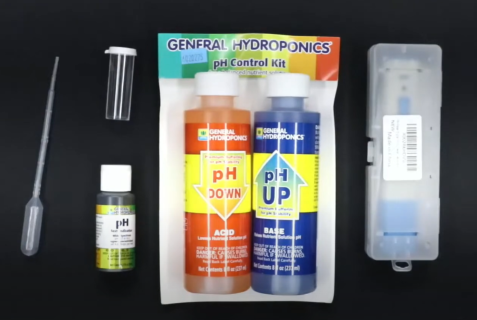
The most commonly used products for pH adjustment are General Hydroponics’ pH Up and pH Down.
You’ll also need a pH meter or pH strips to measure your solution’s pH level.
The process is simple: dip the pH meter into the solution and add pH Up or Down until you reach your target level. I usually aim for around 5.7 or 5.8, as I’ve noticed the pH tends to rise over time.
To pH or Not to pH?
Recent findings suggest that adjusting the pH of the reservoir water in semi-hydroponics might not be necessary.
The pH of the root zone can differ from that of the reservoir water, and it can even fluctuate throughout the day. So, all your efforts in pH adjustment might be in vain.
I recommend doing your own research and experiments on this. Personally, I’ve found that my usual nutrient mix lands me in the 5.0-6.0 pH range, so I’ve stopped worrying about pH adjustments.
In summary, while pH is important for nutrient absorption, its role in semi-hydroponic systems is still up for debate. It’s worth doing your own experiments to see what works best for you. Happy growing!
The Ideal Nutrient Mix for Houseplants: A Step-by-Step Guide
Looking to give your houseplants the best nutrients they can get? Here’s a simple guide to making your own nutrient mix that your plants will love.
Why Different from Orchids and Hoyas?
Houseplants generally need a bit more potassium, and their PPM (Parts Per Million) needs are higher—around 500-600 in winter and up to 1200 in summer.
Monthly Mixing Recipe
Here’s how to make your monthly nutrient mix:
- Start with 1 Gallon of Reverse Osmosis Water.
- Add Potassium Silicate: Use 4 mL of Sturdy Stalk. Let it sit for at least 30 minutes. (Note: I’ve skipped this since 2021 without any issues.)
- CalMag: Add 1 tsp of CalMagic for essential calcium and magnesium.
- NPK Fertilizer: Use 1-2 tsp of MSU Orchid Fertilizer with a 13-2-15 formula.
- Root Boosters: Add 1 tablespoon of KelpMax or 1-2 mL of RapidStart. Both are good choices.
- Probiotics: Use 4 mL of Quantum Orchid or 2 mL of Orca for a healthy root zone.
- Fulvic/Humic Acid: Add 1 mL of Mr. Fulvic for better nutrient uptake.
- Adjust pH: This is your final step. Aim for a balanced pH level.
The Perfect Nutrient for Orchids and Hoyas
Wondering how to make the ideal nutrient mix for your orchids and hoyas? You’re in the right place! Let’s break it down.
Orchids and hoyas have unique nutrient needs compared to other houseplants.
For instance, orchids are light feeders and prefer a PPM (Parts Per Million) range of 200-300 in winter and 350-400 in summer. Hoyas, on the other hand, need almost double the nutrients compared to orchids, especially in the spring.
Monthly Mixing Recipe
Here’s a simple recipe you can whip up once a month with the following order:
- Start with 1 Gallon (4l) of Reverse Osmosis Water.
- NPK Fertilizer: Add 3/4 tsp of each General Hydroponics FloraSeries. Another solid choice is K-Lite.
- Root Boosters: Use 1 tsp of RapidStart.
- Probiotics: Add 1/2 tsp of Orca to promote a healthy root zone.
- Fulvic/Humic Acid: Use 1/2 tsp of Mr. Fulvic for better nutrient absorption.
- Adjust pH: This is your final step. Aim for a pH level of 5.5-5.7.
For Regular Feedings
Use the same mix but skip the RapidStart. Probiotics are key, so keep using them even if they’re a bit pricey.
Orchid Fertilizer (MSU) K-Lite
- Contains Calcium, Magnesium, and essential micronutrients.
- 100% water-soluble with included scoop and directions. Resealable packaging keeps moisture out.
- Widely regarded as the best orchid fertilizer available, promoting strong, full-bloom potential in orchids and other tropical plants.
- Excellent for Orchids, Anthuriums, Philodendrons, and various tropical plants.
K-Lite
K-Lite is a special fertilizer developed by Michigan State University and orchid enthusiasts. It mimics the natural nutrient balance that epiphytes like orchids and hoyas find in their native habitats.
Trust me, the folks at Michigan State know their plants!
So, there you have it! A simple, effective nutrient mix for your orchids and hoyas. Happy planting!
Summary
Switching to a semi-hydroponic system for your plants involves understanding the basics of nutrient solutions, particularly the use of 0 PPM water like reverse osmosis or distilled water. It’s essential to grasp the concepts of PPM (Parts Per Million) and TDS (Total Dissolved Solids) for accurately measuring nutrient strength.
Different water types suited for semi-hydroponics, including tap, filtered, and RO water, each have their unique implications. Essential minerals such as calcium and magnesium are vital in your nutrient mix, and knowing how to add these back is key.
Creating the ideal nutrient blend is a nuanced process, and there are specific approaches for general houseplants as well as varieties like orchids and hoyas. The role of pH levels in nutrient absorption is also discussed, highlighting the ongoing debate in this area.
FAQ
Superthrive is a popular product, but it’s not my go-to. Why? It contains synthetic hormones like NAA and IBA that boost root growth. Sounds good, right? But use it too much, and you risk deforming your plant. I prefer safer options like KelpMax and RapidStart for encouraging root growth.
If you’re new to plant care, I’d steer clear of organic fertilizers. They can be tricky to get right. As for Liquid Dirt, I’ve got some reservations. There are reports of nutrient deficiencies after just 6 months of use. Plus, they’re bending some rules with their advertising. So, I can’t recommend it, especially for semi-hydroponics. Want the full scoop? Read this article where I break down why Liquid Dirt gets a thumbs down from me.
For semi-hydroponics, the ideal water types are reverse osmosis (RO) or distilled water, both starting at 0 PPM. Tap water can be used but often contains extra minerals and additives like fluoride and chlorine, which might not be suitable for all plants.
PPM (Parts Per Million) is crucial in semi-hydroponics as it measures the concentration of nutrients in the water. A TDS (Total Dissolved Solids) meter is used to check PPM levels, ensuring the right nutrient balance for your plants.
In semi-hydroponics, especially when using 0 PPM water, essential minerals like calcium and magnesium are missing. These need to be added back to the nutrient mix as calcium is vital for cell wall structure and magnesium is key for photosynthesis.
It’s not recommended to use regular houseplant fertilizers in semi-hydroponics. Specialized fertilizers are needed that cater to the unique nutrient absorption methods of plants in these systems.
Adjusting pH levels can be important for nutrient absorption, but its necessity varies. Some plants have specific pH requirements, and different nutrients are absorbed better at certain pH levels. However, the role of pH in semi-hydroponics is still a debated topic.
The ideal nutrient mix varies by season, with a PPM of around 500-600 in winter and up to 1200 in summer. It should include a balanced NPK (Nitrogen, Phosphorus, Potassium) fertilizer, calcium, magnesium, and possibly additives like rooting stimulants or probiotics.

